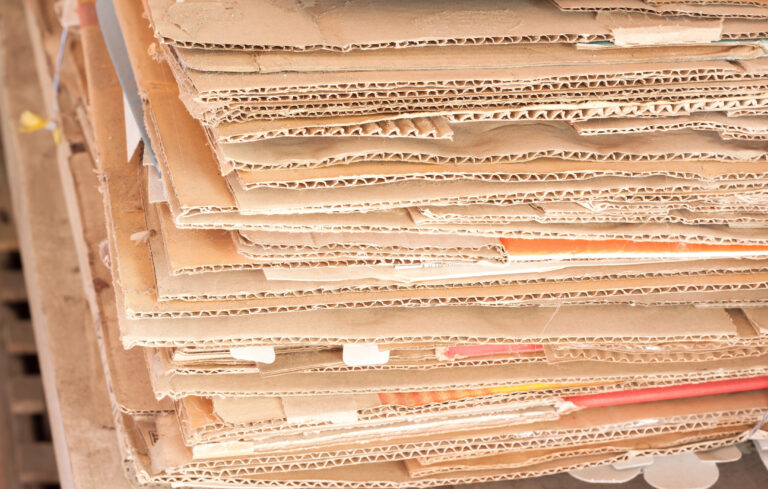Corrugated pads are protective cushioning products made from layers of corrugated cardboard bonded together. Unlike regular single-wall corrugated cardboard, corrugated pads contain additional fluted medium layers that significantly increase the thickness and cushioning properties of the board. The multi-layered structure provides excellent shock and vibration absorption as well as insulation from temperature extremes.
Key properties include high levels of cushioning, shock absorption, and compression resistance. These attributes make corrugated pads ideal for use as protective packaging for fragile or heavy items during shipping and transport. The pads cushion products from damage while providing structural rigidity to prevent crushing.
With customizable density ratings, corrugated pads play an integral role in packaging across many industries by allowing safe and secure transport of all kinds of goods. Their lightweight, recyclable nature also makes them a cost-effective and sustainable choice.
Manufacturing Corrugated Pads
Corrugated pads start out as corrugated cardboard sheets that run through a specialized double-face laminating machine. This equipment takes the corrugated cardboard sheets and inserts additional layers of fluted corrugated medium between the front and back facing of the cardboard. The fluted medium provides extra thickness and cushioning ability. Running the corrugated cardboard sheets through the double-facer results in a much thicker multi-layered board material, typically ranging from 1/8 inch up to 1 inch thick.
Most corrugated pads utilize at least 3 layers but often contain 5 or more layers to maximize the cushioning properties. The greater number of layers provides increased shock and vibration dampening while also improving insulation capabilities.
In addition to double-faced pads, single-faced varieties can be made by laminating corrugated medium to just one side of a facing sheet. The manufactured corrugated pads come off the corrugator machine in continuous bulk sheets or rolls. These can then be cut down to size for specific applications. Whether in large rolls or custom cut sheets, the finished multi-layered corrugated boards offer enhanced protective cushioning and strength for packaging fragile items.
The thickness and density of the pads can be adjusted by using different flute sizes in the corrugated medium or by increasing the number of layers laminated together. This allows manufacturers to create pads with the exact cushioning properties needed for a particular use case or product. The customizable nature makes corrugated pads applicable to a wide variety of industries and products.
Key Properties and Strengths
Corrugated pads provide high levels of shock and vibration absorption for products during transport thanks to their multi-layered structure. The fluted design evenly distributes impact forces while the thickness cushions fragile items from damage. This cushioning also insulates products from temperature extremes, whether hot or cold. Certain coatings can increase water resistance as needed for protecting electronics or fresh produce. At the same time, corrugated pads provide a rigid corrugated structure to prevent the crushing of goods under heavy loads.
The pads themselves can support heavy stacked weights up to 700 pounds or more, depending on the density rating. These customizable density ratings typically range from 125 pounds up to 700 pounds using various calipers of combined chipboard sheets. Despite supporting heavy loads, the overall pads remain lightweight and easy to handle. Corrugated pads are also chemically inert, non-abrasive, and won’t contaminate goods during transport and storage. They provide a protective barrier without adding weight or volume.
The pads are cost-effective to produce and can utilize recycled materials in their production. Being recyclable themselves, corrugated pads are an environmentally friendly choice. With impressive strength, versatility, and sustainability, corrugated pads offer the ideal combination of properties to safely package and transport all kinds of fragile goods.
Applications and Uses
Corrugated pads have a diverse range of applications any time products require protection during shipping, transport, or storage. They commonly cushion heavy, fragile items like electronics, appliances, and furniture to prevent damage while in transit.
The pads line the interior walls of crates and boxes or are cut into custom shapes and sizes to envelop products. Stacked or bundled items can be interleaved with sheets of corrugated pads to prevent abrasion damage and add stability. During moving and relocations, the pads also provide temporary floor protection while transporting heavy equipment and furniture. Truckers utilize water-resistant pads to secure shifting cargo loads inside trailers.
Additional uses extend beyond shipping to include weather protection covers, thermal insulation for temperature-sensitive goods, and padding beneath flooring, carpets, or area rugs. The key benefit in all applications is the cushioning properties that absorb shocks, vibrations, and impacts that could otherwise harm the protected contents.
With densities to support any weight and customizable shapes for any product, corrugated pads have become an essential packaging component across many industries and supply chains. Their protective qualities allow the safe and secure transport of fragile goods in a sustainable and cost-effective manner.
Corrugated pads utilize a multi-layered fluted structure to provide thick, rigid cushioning that protects products from shocks and impacts. Manufacturers can customize the density ratings and dimensions as needed for any application.
Corrugated pads now play an integral role in packaging fragile goods across industries to reduce damages during shipping and handling. Usage continues to expand beyond just transport into flooring, construction, and temperature insulation.
Further material and design innovations, such as water-resistant coatings, will enhance the effectiveness of these versatile, sustainable corrugated pads in the future. With their protective qualities and customizability, corrugated pads offer an optimal solution for the safe transport of fragile goods.

